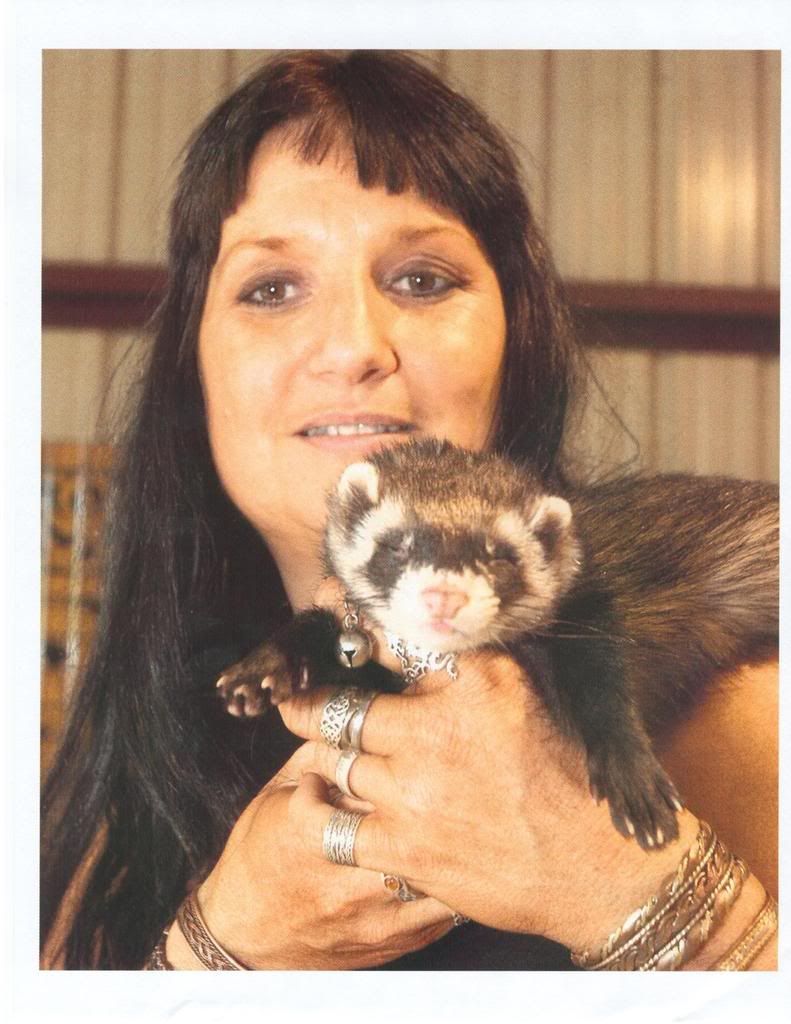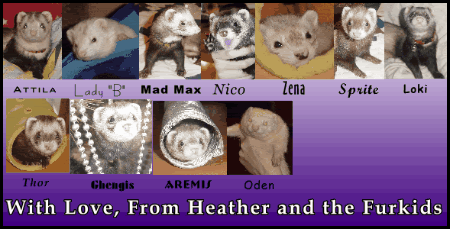Post by joan on Sept 3, 2008 15:43:12 GMT -5
I've been involved with ferrets since 1996 and decided a couple years later that I wanted to try breeding a litter or two. I'd bred and showed Basenjis very successfully for almost 30 years, and really missed planning breedings and raising the babies.
After searching for several months for sable ferrets, I finally found what I was looking for and had my first litter a year later. I breed sables from a sable only background, as I was all too familiar with the problems caused by dilute colors and certain types of white markings in dogs. After two litters, I knew I wanted to breed ferrets long term so began learning all I could about ferret genetics and the sources for the type of stock I needed to breed top quality ferrets with an emphasis on health and the mental qualities I liked.
Although I fed top quality ferret kibbles, I began feeding chicken necks and wings several years ago, thanks to the knowledge of correct ferret diet I was taught by European ferret breeders. I tried the low carb kibbles for a couple years, but still felt they left much to be desired re an optimum diet. Once I found a close, affordable source for frozen mice and had all the ferrets eating them, along with chicken and rabbit, I discontinued feeding kibble altogether almost 2 years ago.
I'm also a firm believer in minimal vaccination, as I watched the damage done by it to both dogs and cats for many years. I'm pleased that many ferret owners are finally realizing that most boosters are not only unnecessary, but do more harm than good.
While I have a ferret room where their cages are kept, my ferrets get a lot of free roam in the house with minimal caging, and also have an outdoor run for use when the temps are below 80. All but my oldest one have hybrid background, so they are extremely intelligent and active, and demand a lot of exercise and personal interaction.
I currently have 4 adults, and a litter of 4 month old kits. I usually place the adults after a litter or two, to ensure that my numbers stay down and so that they all will continue to get the individual attention and exercise they deserve.
After searching for several months for sable ferrets, I finally found what I was looking for and had my first litter a year later. I breed sables from a sable only background, as I was all too familiar with the problems caused by dilute colors and certain types of white markings in dogs. After two litters, I knew I wanted to breed ferrets long term so began learning all I could about ferret genetics and the sources for the type of stock I needed to breed top quality ferrets with an emphasis on health and the mental qualities I liked.
Although I fed top quality ferret kibbles, I began feeding chicken necks and wings several years ago, thanks to the knowledge of correct ferret diet I was taught by European ferret breeders. I tried the low carb kibbles for a couple years, but still felt they left much to be desired re an optimum diet. Once I found a close, affordable source for frozen mice and had all the ferrets eating them, along with chicken and rabbit, I discontinued feeding kibble altogether almost 2 years ago.
I'm also a firm believer in minimal vaccination, as I watched the damage done by it to both dogs and cats for many years. I'm pleased that many ferret owners are finally realizing that most boosters are not only unnecessary, but do more harm than good.
While I have a ferret room where their cages are kept, my ferrets get a lot of free roam in the house with minimal caging, and also have an outdoor run for use when the temps are below 80. All but my oldest one have hybrid background, so they are extremely intelligent and active, and demand a lot of exercise and personal interaction.
I currently have 4 adults, and a litter of 4 month old kits. I usually place the adults after a litter or two, to ensure that my numbers stay down and so that they all will continue to get the individual attention and exercise they deserve.





